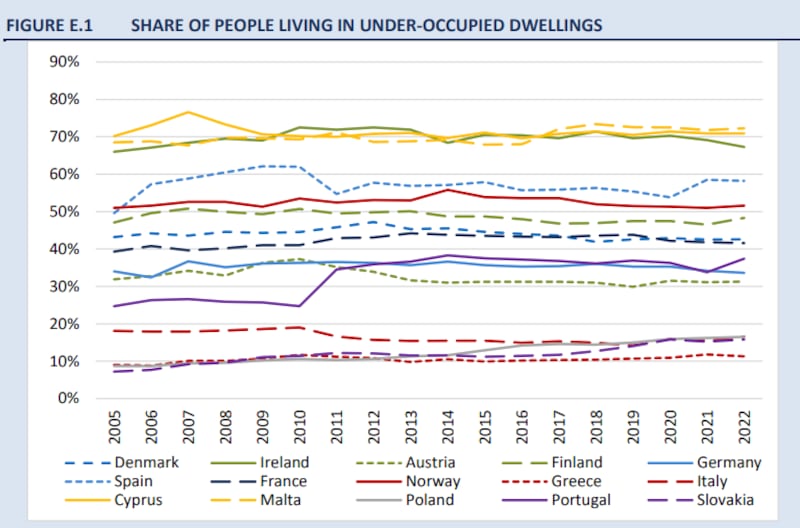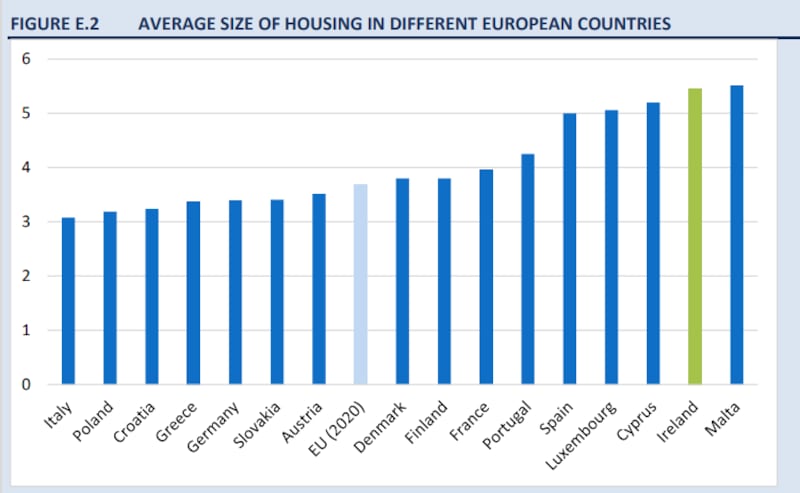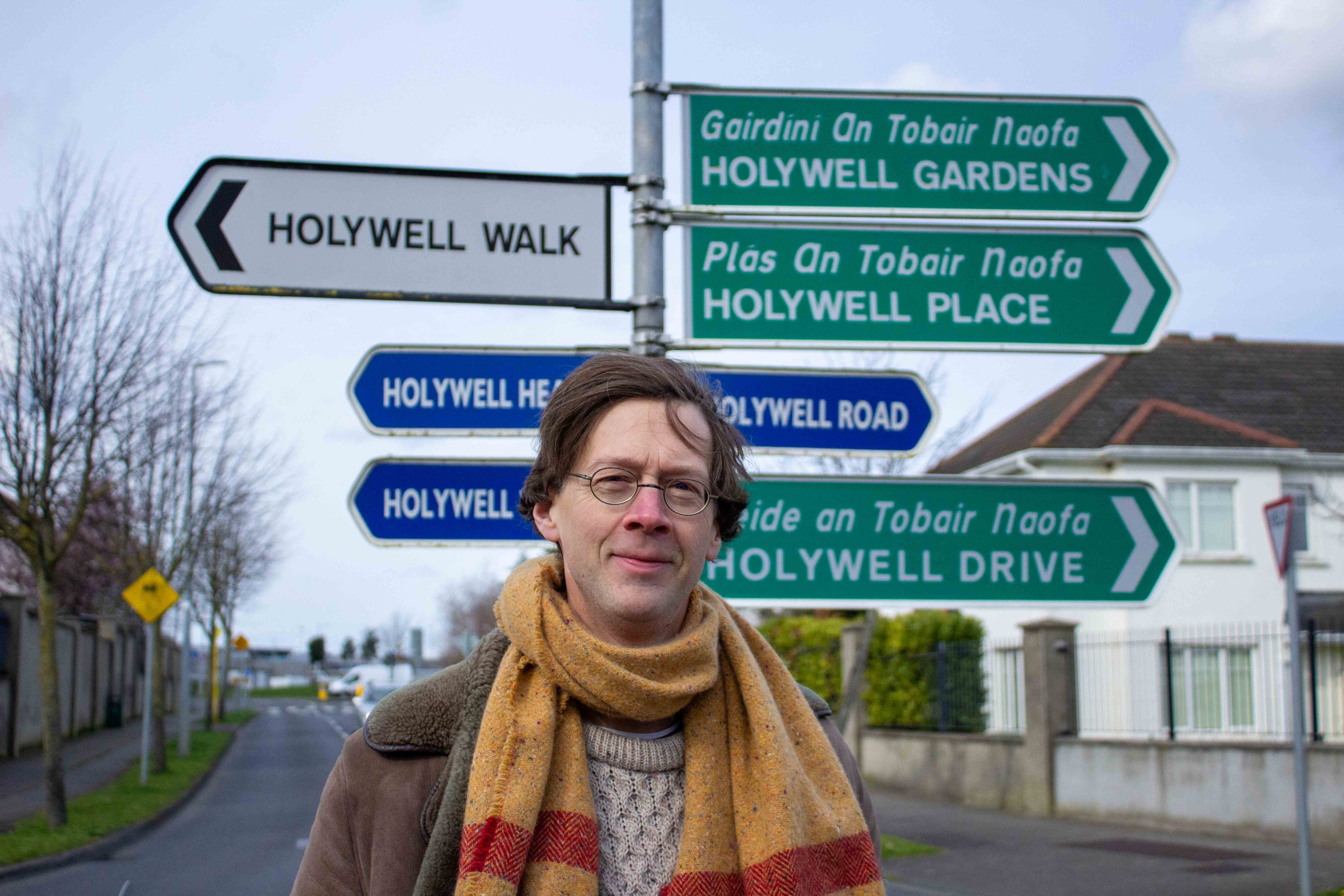Annette Dooley, who is nearly 80 years old, lives alone in a four-bedroom house in Carlow.
She’s fit and active, and has a busy routine to keep on top of; there’s the cleaning, including regularly vacuum-cleaning, dusting, washing curtains and tending to her flower beds.
“I also get the windows cleaned about every six weeks, but I do the insides myself,” she said.
Dooley knows she is lucky to be in the good health to be able to keep on top of all this work, but even so she has in the past considered moving to a smaller, more manageable place.
RM Block
Her husband Tony died nine years ago, when Dooley was 70. At the time she seriously considered moving to a smaller home, perhaps a bungalow better suited her future needs.
It wasn’t as easy as it looked. While friends had moved into a small development elsewhere in the county, a community for older people with small homes, some communal facilities, and a social hub at its centre, Dooley herself did not qualify for such housing.
Buying a second-hand house to renovate, she said, “just wasn’t feasible”.
Downsizing – or right-sizing, as it is sometimes called – has long been mooted as a possible solution to at least part of the housing crisis. The issue raised its head again this week as the Economic and Social Research Institute, the think tank, published a report noting that more than 88 per cent of people over 65 years live in under-occupied housing.

Some have argued that more right-sizing could free up houses for younger families, while older people could move into smaller, more suitable homes.
It’s not quite so straightforward. Take Edward Doyle, a regional development officer for Active Retirement who lives near Straffan in northwest Kildare with his wife Bernadette.
Doyle is 75 and has thought about the future, should their current house no longer suit their needs.
“I’m of an age here where I have this house with a big garden, a lot of hedges to be cut, and in another four or five years I might not be able to cut the hedges,” he said.
“Inevitably, over the next couple of years, whether it’s just age or an accident, you want to end up somewhere that’s maintenance-free with a small garden, ideally a bungalow.”
One of the big challenges with downsizing, he said, was “builders are not building small bungalows” of the type many people in his situation would mostly be interested in, he said.
Then there’s the cost of buying in or near his own community. Houses in Naas, for example, are not far off the kinds of prices people pay in leafy parts of south Dublin.
Moving to less expensive parts of Kildare, such as Newbridge, would be affordable, but would leave Edward and Bernadette slightly cut off from the community they have lived a large portion of their lives in.
This situation is not unusual and reflects the complexity of downsizing, said Nat O’Connor, public affairs and policy specialist with Age Action, an advocacy group for older people.
He said there were factors missed by the focus on the headline number of 88 per cent of homes being under-occupied. These include major changes in demographics and how that affects housing profile in the country. Then there is the oversupply of one-off housing as opposed to large apartments. There is also the cultural tendency in Ireland where people prefer to own their own home and the importance of housing being an asset and store of wealth for Irish people to a more significant degree than in other countries.
“Older persons want to age in place, and it’s very clear there’s a huge focus on being able to age for as long as possible in your own home, your own community, with your social connections, near your GP and pharmacist, and where you’re known,” said O’Connor.
“That’s what it means to be part of a community and it’s natural for people to want to stay where they are.”
Making the move isn’t as easy as selling one house and buying a smaller, cheaper one either. Finding a new house is difficult in the current market, and an older person might need bridging finance to cover the period between the sale of the old house and the purchase of a new one, which often isn’t easy to find.

Then there is the intangible but very material question of the role of a long-standing family home as a kind of hub for different generations. That may be keeping a spare room for sons or daughters, grandchildren or friends, meaning a couple might need more than just the room they sleep in.
The assumption that unoccupied rooms are just wasted space isn’t accurate, O’Connor said. A downstairs bedroom may be used regularly by a spouse with mobility issues or sleep apnoea, or the room might be used as an office.
“My concern is about the search for quick solutions to the housing crisis – and there aren’t any,” O’Connor said.
Those are not the only structural problems in the idea of mass downsizing to ease the housing crisis.
I’m not going to just move anywhere to live in any wee pokey place, or a dangerous place, that’s not what we want. We want the standard we have got now, or a better standard. At our age I think we’re entitled to that
— Mairead Hickey
Mairead Hickey, who is 68 and has no plans for retirement, lives in Laois with her husband in a house that would fall into the category of under-occupied, given that some of her children have moved out but not all of them. Hickey’s grown-up son still lives at home, like thousands of other adults who have been unable to find a house or apartment to rent or buy in the housing crisis.
“Downsizing is not going to solve the problem of my son not being able to buy a house. He’s still going to find it difficult in this market, and if we sell this house then two houses will have to be bought,” Hickey said.
On a personal level, Hickey was reluctant to leave a house she has lived a large chunk of her life in.
“We saved hard to get our house, we now are only at the stage where we have our house where we want it to be” after years of raising children, she said.
“I’m not going to just move anywhere to live in any wee pokey place, or a dangerous place, that’s not what we want. We want the standard we have got now, or a better standard. At our age I think we’re entitled to that.”
She is aggrieved at the notion that there are under-occupied houses out there, likening it to the accusation of people being bed-blockers in hospitals, with all the implied social pressure it places on people to give up their homes to help solve the housing emergency.
As far as Kelly is concerned, the problem isn’t one of under-occupied houses but of a lack of suitable supply in the wider market.
“This ‘solution’ is not a solution – it’s us older people being asked to solve a problem that’s not of our making,” she said.
Hickey’s view is borne out by a study by the Department of Housing in 2020, which examined how many homes could be unlocked by policy measures designed to incentivise older homeowners to downsize.
The study found the potential was quite high. It estimated that more than 600,000 households are “mature homeowners”, though they defined this broadly as owners who are 55 and older and that a substantial subset of that group of homeowners had “regularly unused bedrooms”.
The paper found that there was a substantial degree of resistance to the idea of downsizing, concluding that “most mature homeowner households prefer not to downsize”, citing “an emotional attachment to the home” in more than half the cases.
It also noted that “most feasible policy measures seem unlikely to considerably alter this preference for the majority of households”.
It noted that between 15 and 20 per cent of mature homeowners could potentially be convinced, which would amount in real terms to between 91,000 and 121,000 homes.
The report came with a caveat: households would only be “willing to move if they could sell their home and purchase a smaller, purpose-built home for mature households in the same area for a lower price”.
In short, the only way to unlock the potential in under-occupied houses will be to build more houses.
The report notes the “relatively low proportions which would consider moving to an apartment”, which for some seems to be a leap too great.
For Annette Dooley in Carlow, that’s the core of the issue: downsizing cannot really be achieved if you’re not providing people with the kind of accommodation they want, whether that’s moving from one community to another, or moving from a house to an apartment.
“If you move into an apartment, you don’t know if the fellah above you or below you is going to play music from two o’clock in the morning, and you have no say, you can’t stop him; he’s in his own apartment,” she said. “But you have to have your own space.”
- Listen to our Inside Politics Podcast for the latest analysis and chat
- Sign up for push alerts and have the best news, analysis and comment delivered directly to your phone
- Find The Irish Times on WhatsApp and stay up to date










